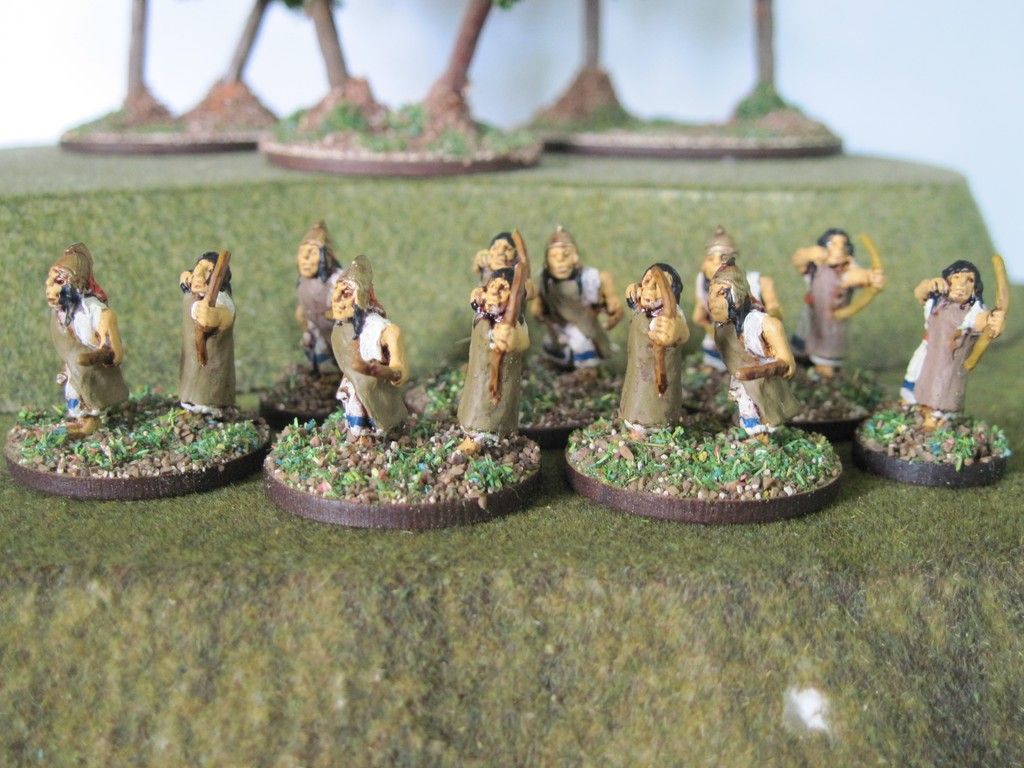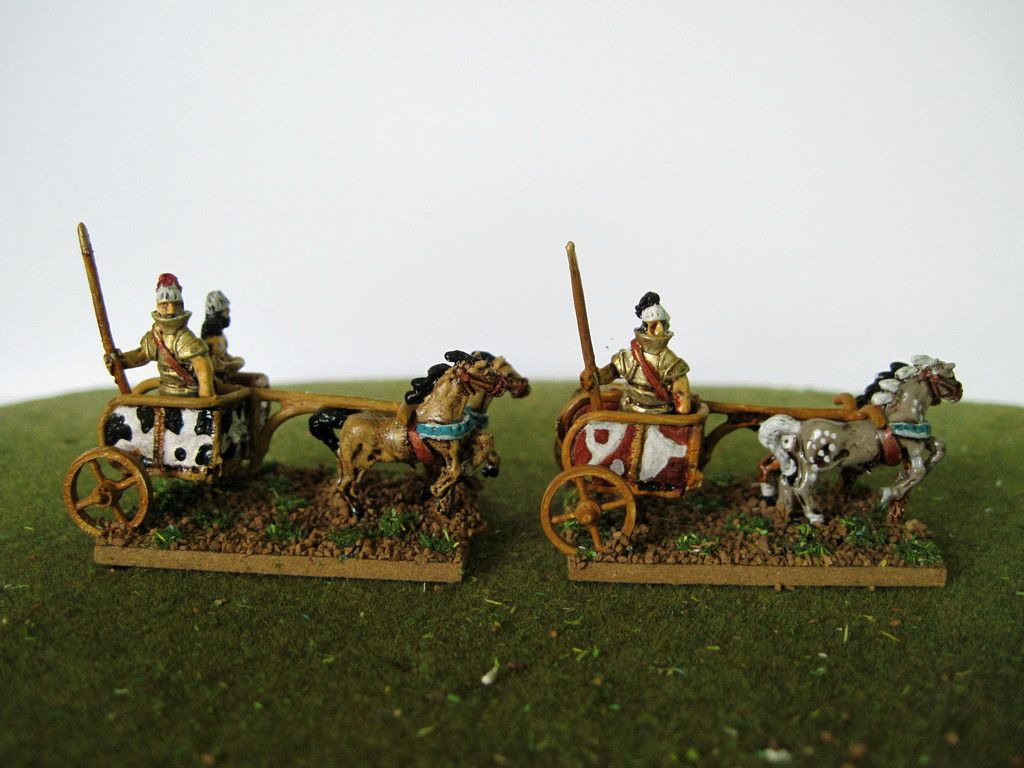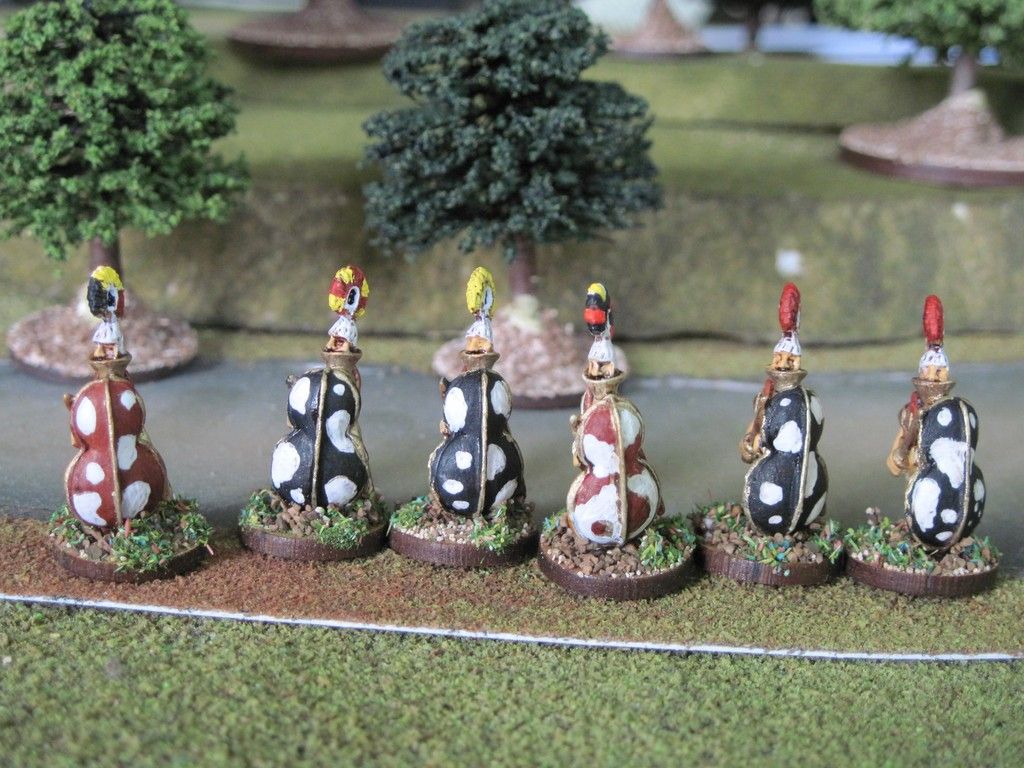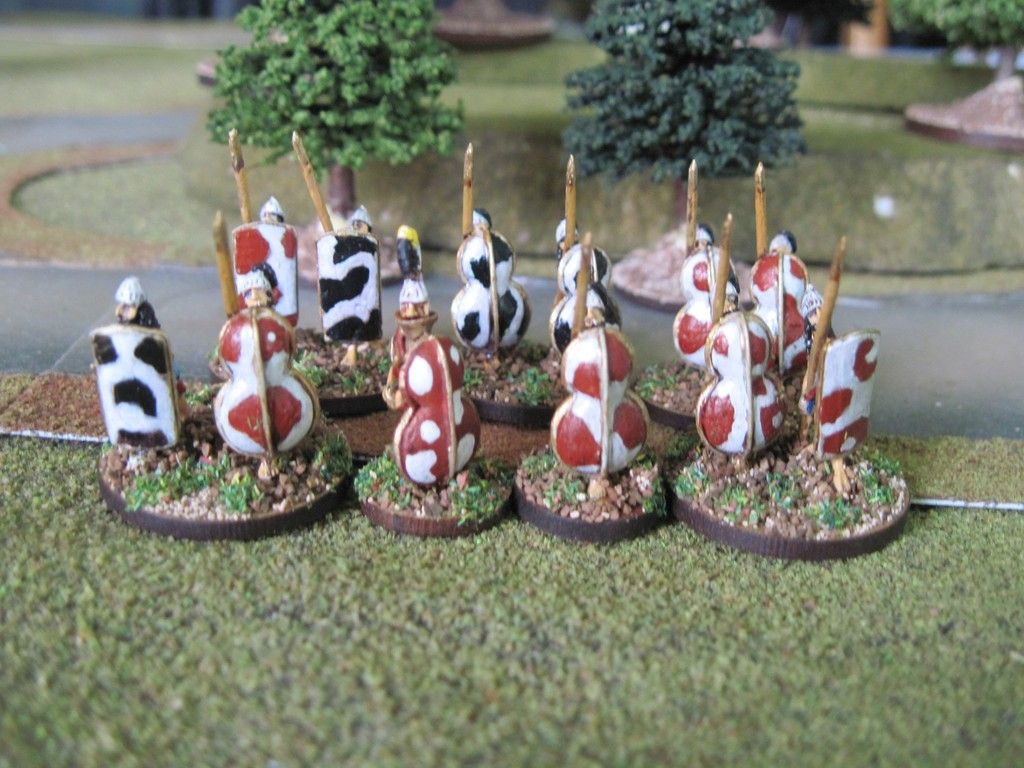So, the chariots, what do we know? Firstly, chariots were an innovative military
technology that enabled the Aryans* and their imitators to dominate the
battlefield wherever they went. Making
and maintaining chariots was complex and expensive. Providing, training and
feeding the horses was equally so. Each
chariot had a long tail of technicians and specialists behind it, all of whom
needed reward and bed and board and that’s before we get to the specialist
crew.
Chariots were fast moving and durable, the horses and crew
were trained to have high stamina. Some
protection was provided to the crew by the vehicle itself although as it was of
light construction more was needed.
Various armours were provided to the fighting crewman, thin bronze plate
for the Mycenaeans and full length bronze scale coats further east. The expensive investment of time and
resources was being protected. The
horses were more vulnerable and couldn’t be up armoured in the same way without
compromising speed and stamina.
The consensus is that chariots fought by shooting down
their opponents from outside the effective range of return fire of most
opponents. This was enabled by using the
more effective and very expensive composite bow. Against other chariots they dueled until one
side prevailed. There may, or may not,
have been a convention among charioteers not to harm each other’s valuable
horses which could then be taken as prizes by the winners. This all seems to
work for middle eastern armies.
To model this on the table, what we need is a fast - moving
missile platform whose crew can out range all opponents not similarly equipped. Invulnerable except to equals unless they get
caught in melee or stray into enemy effective missile range. Not too hard to achieve within the Lion Rampant framework. First, as a special rule, use the existing skirmish rule shoot/move/move /shoot as an ordered action. Second, and trickier, the charioteers bows should out range all others and be more effective. We could just do away with the long range shooting penalty for chariot troops using composite bows. Otherwise, its increasing the range for composite bow fire or reducing the range of non composite bows.
If, and it’s just an if, Mycenaean chariots were intended
for close combat we need a different model.
Missilery is now a javelin much shorter ranged than the composite or
indeed any other bow or sling.
The chariot is just as swift but now the charioteer must
bring his warrior into prime position to spear their chariot borne opponent.
There is absolutely no requirement to envisage such combat as a ‘joust’. An Arial ‘dog fight’ might be a better comparative image.
Against spear armed foot this model of chariot squadron could simple
pass along the opposing frontage hurling javelins or swiftly dismount a band of
heavily protected heroes who would make mincemeat of anyone in front of them.
Some of this is straight forward, an ordered 'dismount' move to taxi the heroes in and another 'remount' to pick them up. This gives us two newly dismounted Mycenaean heroes in Dendra armour who will each throw 6 attack dice, heroic indeed. Likewise javelin throwing, an ordered skirmish move and shoot at a range of ''3 works for me.
I'm going to use two chariots per unit, since they can take 6 hits I'm adding 4 non fighting chariot runners who can be removed as casualties mount. A nicer aesthetic than my usual markers I think.
To try this out using Lion Rampant I'm going to use Mycenaeans versus a Sea People and Libyan alliance in a Hammer and Anvil scenario. All I'm waiting for is a delivery from Warbases.
*Not to be confused with any 20th century politically ideologized concept of Aryans.































